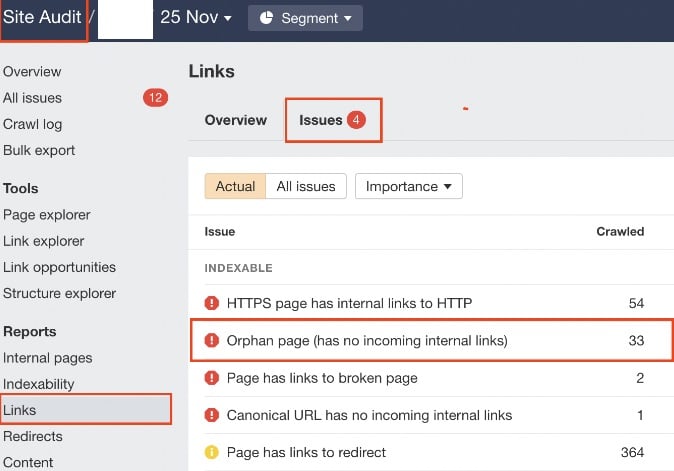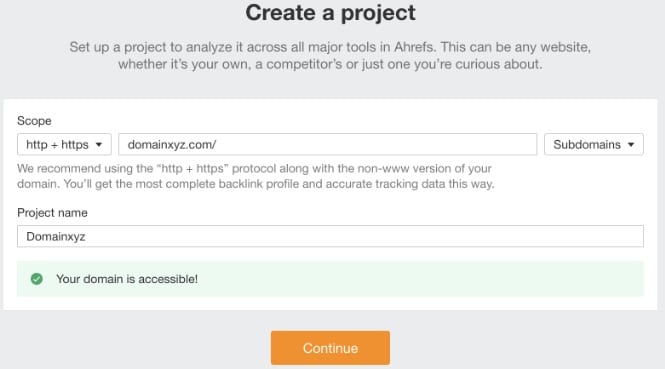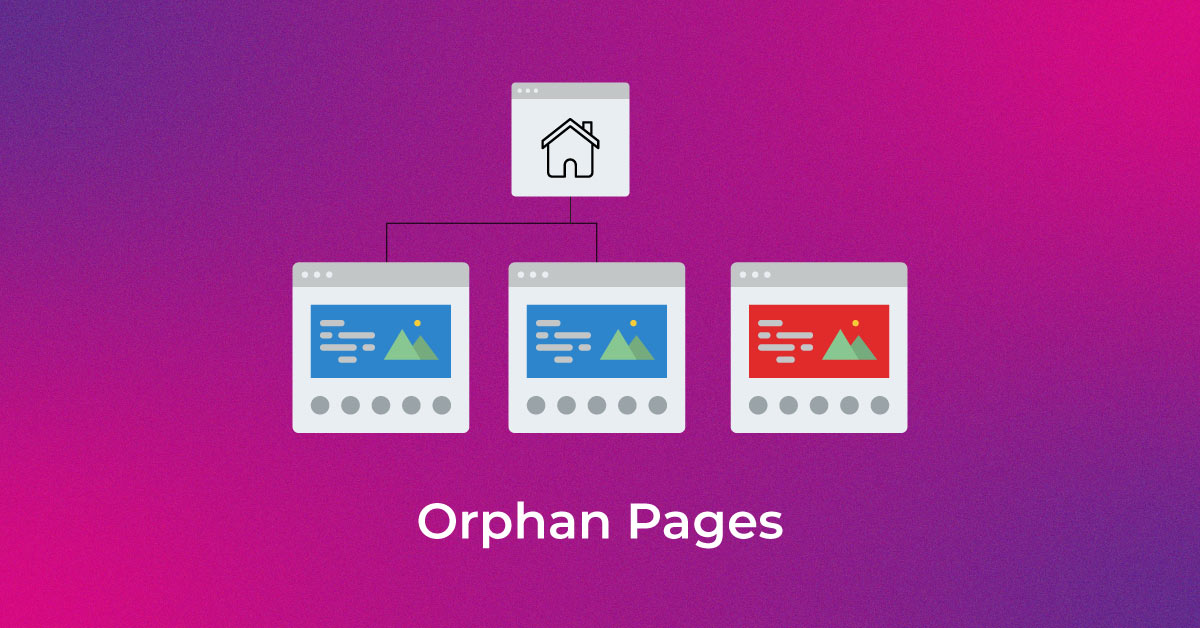What are Orphan Pages and Why Do They Matter?
Orphan pages are web pages that are not linked to from any other page on a website, making them inaccessible to users and search engines. These pages can negatively impact user experience and search engine rankings, as they can lead to a poor website structure and make it difficult for search engines to crawl and index the site. Identifying and addressing orphan pages is essential to maintaining a healthy website and improving search engine optimization (SEO).
When a website has orphan pages, it can lead to a range of issues, including reduced website crawlability, decreased page views, and lower search engine rankings. Orphan pages can also make it difficult for users to find the information they need, leading to a poor user experience and increased bounce rates. By understanding what orphan pages are and how they can impact a website, webmasters can take steps to identify and fix these issues, improving the overall health and performance of their site.
One of the main reasons why orphan pages matter is that they can prevent search engines from crawling and indexing the site. When a page is not linked to from any other page, search engines may not be able to find it, which can lead to reduced visibility and lower search engine rankings. By identifying and addressing orphan pages, webmasters can ensure that their site is fully crawled and indexed, improving their search engine rankings and driving more traffic to their site.
In addition to impacting search engine rankings, orphan pages can also affect user experience. When users encounter a page that is not linked to from any other page, they may become frustrated and leave the site, leading to increased bounce rates and reduced engagement. By identifying and fixing orphan pages, webmasters can improve the user experience, increase engagement, and drive more conversions.
Overall, orphan pages are a common issue that can have a significant impact on website performance and user experience. By understanding what orphan pages are and how they can impact a website, webmasters can take steps to identify and fix these issues, improving the overall health and performance of their site.
Common Causes of Orphan Pages: Understanding the Root of the Issue
Orphan pages can occur due to a variety of reasons, including website redesigns, content migrations, and broken links. When a website undergoes a redesign, it’s not uncommon for pages to become orphaned as a result of changes to the site’s structure and navigation. Similarly, when content is migrated from one platform to another, pages can become disconnected from the rest of the site, leading to orphaning.
Broken links are another common cause of orphan pages. When a link is broken, it can prevent search engines and users from accessing the page, effectively orphaning it. This can happen due to a variety of reasons, including typos in the link, changes to the page’s URL, or the removal of the page altogether.
Other common causes of orphan pages include changes to the site’s sitemap, the use of incorrect redirects, and the failure to update internal linking. When a sitemap is not updated correctly, it can lead to pages being missed by search engines, resulting in orphaning. Similarly, the use of incorrect redirects can cause pages to become disconnected from the rest of the site, leading to orphaning.
Understanding the root cause of orphan pages is essential to identifying and addressing them. By recognizing the common causes of orphan pages, webmasters can take steps to prevent them from occurring in the future. This includes regular website audits, content maintenance, and internal linking strategies.
For example, when redesigning a website, it’s essential to ensure that all pages are properly linked to from the rest of the site. This includes updating the site’s sitemap and internal linking structure to reflect the changes. Similarly, when migrating content, it’s crucial to ensure that all pages are properly connected to the rest of the site, and that broken links are identified and fixed.
By understanding the common causes of orphan pages, webmasters can take proactive measures to prevent them from occurring. This includes regular website audits, content maintenance, and internal linking strategies. By taking these steps, webmasters can ensure that their site is healthy, and that orphan pages are identified and addressed.
How to Find Orphan Pages Using Website Crawling Tools
Website crawling tools are an essential part of any website maintenance routine. These tools can help identify orphan pages, broken links, and other issues that can negatively impact user experience and search engine rankings. In this section, we’ll explore how to use website crawling tools like Screaming Frog, Ahrefs, and SEMrush to find orphan pages.
Screaming Frog is a popular website crawling tool that can help identify orphan pages, broken links, and other issues. To use Screaming Frog, simply enter your website’s URL and let the tool crawl your site. The tool will then provide a list of orphan pages, broken links, and other issues that need to be addressed.
Ahrefs is another powerful website crawling tool that can help identify orphan pages. Ahrefs offers a range of features, including a site audit tool that can help identify orphan pages, broken links, and other issues. To use Ahrefs, simply enter your website’s URL and let the tool crawl your site. The tool will then provide a list of orphan pages, broken links, and other issues that need to be addressed.
SEMrush is a comprehensive website crawling tool that can help identify orphan pages, broken links, and other issues. SEMrush offers a range of features, including a site audit tool that can help identify orphan pages, broken links, and other issues. To use SEMrush, simply enter your website’s URL and let the tool crawl your site. The tool will then provide a list of orphan pages, broken links, and other issues that need to be addressed.
When using website crawling tools to find orphan pages, it’s essential to understand how to interpret the data. Look for pages that are not linked to from any other page on your site, as these are likely to be orphan pages. You can also use the tool to identify broken links, missing pages, and other issues that can negatively impact user experience and search engine rankings.
By using website crawling tools to find orphan pages, you can take the first step towards identifying and addressing these issues. Remember to regularly crawl your site to ensure that you’re identifying and addressing orphan pages and other issues in a timely manner.
Leveraging Google Search Console to Identify Orphan Pages
Google Search Console is a powerful tool that can help identify orphan pages on a website. By analyzing crawl errors, sitemap submissions, and URL inspection, webmasters can gain valuable insights into the health of their website and identify potential issues.
To use Google Search Console to find orphan pages, start by logging into your account and navigating to the “Crawl” section. Here, you’ll find a list of crawl errors, including pages that are not linked to from any other page on your site. Look for pages that are listed as “not found” or “not indexed,” as these may be orphan pages.
Next, navigate to the “Sitemaps” section and review your website’s sitemap submissions. A sitemap is a file that lists all the pages on your website, and it can help search engines understand the structure of your site. If you notice that certain pages are not included in your sitemap, it may indicate that they are orphan pages.
Finally, use the “URL Inspection” tool to analyze individual pages on your website. This tool can help you understand how Google is crawling and indexing your pages, and it can identify potential issues that may be causing orphan pages.
By using Google Search Console to identify orphan pages, webmasters can take the first step towards addressing these issues and improving the overall health of their website. Remember to regularly review your crawl errors, sitemap submissions, and URL inspection data to ensure that you’re identifying and addressing orphan pages in a timely manner.
Additionally, Google Search Console provides a feature called “Coverage” which shows the status of each page on your website, including orphan pages. This feature can help you identify which pages are not being crawled or indexed by Google, and take corrective action to fix the issue.
By leveraging Google Search Console to identify orphan pages, webmasters can take a proactive approach to maintaining a healthy website and improving their search engine rankings.
Manual Methods for Finding Orphan Pages: A Step-by-Step Approach
While website crawling tools and Google Search Console can help identify orphan pages, manual methods can also be effective in finding these pages. In this section, we’ll outline a step-by-step approach to manually finding orphan pages on a website.
Step 1: Review Website Sitemaps
Start by reviewing your website’s sitemap to identify any pages that may be missing or not linked to from other pages. Check for any pages that are not included in the sitemap, as these may be orphan pages.
Step 2: Check for Broken Links
Next, check your website for broken links. Broken links can lead to orphan pages, so it’s essential to identify and fix them. Use a tool like Xenu’s Link Sleuth or Broken Link Checker to scan your website for broken links.
Step 3: Analyze Website Analytics
Analyze your website analytics to identify any pages that are not receiving traffic. If a page is not receiving traffic, it may be an orphan page. Use tools like Google Analytics to track page views and identify any pages that are not being visited.
Step 4: Review Website Navigation
Review your website’s navigation to ensure that all pages are linked to from other pages. Check for any pages that are not included in the navigation menu, as these may be orphan pages.
Step 5: Check for Duplicate Content
Finally, check for duplicate content on your website. Duplicate content can lead to orphan pages, so it’s essential to identify and remove any duplicate content.
By following these manual methods, you can identify orphan pages on your website and take steps to fix them. Remember to regularly review your website’s sitemap, check for broken links, analyze website analytics, review website navigation, and check for duplicate content to ensure that your website is healthy and free of orphan pages.
Fixing Orphan Pages: Strategies for Recovery and Prevention
Once you’ve identified orphan pages on your website, it’s essential to take steps to fix them. In this section, we’ll discuss strategies for recovering from orphan pages and preventing them from occurring in the future.
Updating Internal Linking
One of the most effective ways to fix orphan pages is to update your website’s internal linking structure. This involves reviewing your website’s navigation and ensuring that all pages are linked to from other relevant pages. By doing so, you can help search engines understand the structure of your website and improve the visibility of your orphan pages.
Creating New Content
Another strategy for fixing orphan pages is to create new content that links to them. This can help to increase the visibility of your orphan pages and provide users with more relevant and useful content. When creating new content, make sure to link to your orphan pages in a natural and relevant way.
Implementing Redirects
In some cases, it may be necessary to implement redirects to fix orphan pages. This involves redirecting users and search engines from the orphan page to a more relevant and useful page on your website. By doing so, you can help to improve the user experience and prevent search engines from crawling and indexing your orphan pages.
Preventing Orphan Pages
To prevent orphan pages from occurring in the future, it’s essential to take proactive measures. This includes regularly reviewing your website’s sitemap and internal linking structure to ensure that all pages are linked to from other relevant pages. Additionally, make sure to test your website’s navigation and ensure that all pages are accessible and visible to users and search engines.
Regular Website Audits
Regular website audits can help to identify and prevent orphan pages. This involves reviewing your website’s structure and content to ensure that all pages are relevant, useful, and visible to users and search engines. By conducting regular website audits, you can help to improve the overall health and visibility of your website.
Content Maintenance
Content maintenance is also essential for preventing orphan pages. This involves regularly reviewing and updating your website’s content to ensure that it is relevant, useful, and visible to users and search engines. By doing so, you can help to improve the overall health and visibility of your website and prevent orphan pages from occurring.
Tools and Plugins for Automating Orphan Page Detection
Automating orphan page detection can save time and effort, and there are several tools and plugins available that can help. In this section, we’ll introduce some of the most popular tools and plugins for automating orphan page detection.
WordPress Plugins
For WordPress users, there are several plugins available that can help automate orphan page detection. Some popular options include:
– Yoast SEO: This plugin offers a range of features, including orphan page detection, to help improve your website’s SEO.
– Ahrefs: This plugin offers a range of features, including orphan page detection, to help improve your website’s SEO.
– SEMrush: This plugin offers a range of features, including orphan page detection, to help improve your website’s SEO.
Browser Extensions
For non-WordPress users, there are several browser extensions available that can help automate orphan page detection. Some popular options include:
– Screaming Frog: This browser extension offers a range of features, including orphan page detection, to help improve your website’s SEO.
– Moz: This browser extension offers a range of features, including orphan page detection, to help improve your website’s SEO.
Other Tools
There are also several other tools available that can help automate orphan page detection. Some popular options include:
– Google Search Console: This tool offers a range of features, including orphan page detection, to help improve your website’s SEO.
– Ahrefs Webmaster Tools: This tool offers a range of features, including orphan page detection, to help improve your website’s SEO.
By using these tools and plugins, you can automate the process of finding and fixing orphan pages, saving time and effort. Remember to regularly review your website’s orphan pages and take steps to fix them to improve your website’s SEO and user experience.
Best Practices for Maintaining a Healthy Website: Preventing Orphan Pages
Maintaining a healthy website requires regular maintenance and proactive measures to prevent issues like orphan pages. In this section, we’ll summarize best practices for maintaining a healthy website and preventing orphan pages.
Regular Website Audits
Regular website audits are essential for identifying and fixing issues like orphan pages. Conduct regular audits to review your website’s structure, content, and internal linking. This will help you identify any issues and take corrective action to prevent orphan pages.
Content Maintenance
Content maintenance is critical for preventing orphan pages. Regularly review and update your website’s content to ensure that it is relevant, useful, and visible to users and search engines. This includes updating internal linking, creating new content, and implementing redirects.
Internal Linking Strategies
Internal linking strategies are essential for preventing orphan pages. Use a clear and consistent internal linking structure to help search engines understand the structure of your website. This includes using descriptive anchor text, linking to relevant pages, and avoiding broken links.
Proactive Measures
Proactive measures are essential for preventing orphan pages. Regularly review your website’s analytics to identify any issues and take corrective action to prevent orphan pages. This includes monitoring crawl errors, sitemap submissions, and URL inspection.
By following these best practices, you can maintain a healthy website and prevent orphan pages from occurring. Remember to regularly review your website’s structure, content, and internal linking to ensure that it is relevant, useful, and visible to users and search engines.
Preventing orphan pages requires a proactive approach to website maintenance. By regularly reviewing your website’s structure, content, and internal linking, you can identify and fix issues before they become major problems. This includes using tools like website crawling tools, Google Search Console, and internal linking strategies to help identify and fix orphan pages.






